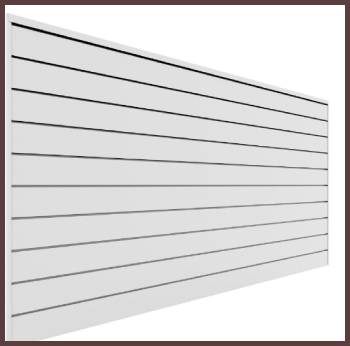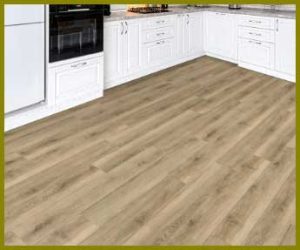In the world of retail and interior design, slatwall has emerged as a popular choice. But is it all it’s cracked up to be?
Let’s dive into the world of slatwall, and see what’s behind the hype.

Slatwall: The Basics
Slatwall is a wall covering made of panels, each comprising horizontal grooves or ‘slats’. It’s often used in retail settings, providing a versatile backdrop for merchandise displays. You’ll find it in homes, too, gracing garage walls and even, occasionally, living rooms.
But what makes slatwall a sought-after choice? Let’s break it down.
Pros of Slatwall
- Versatility
Slatwall is a chameleon, adaptable to an array of situations. It’s suitable for walls, display racks, or even entire rooms. Its grooves accommodate hooks, shelves, and baskets, granting users the freedom to customize their space to their heart’s content.
- Aesthetics
Slatwall can be as pretty as it is practical. Available in various finishes, colors, and textures, it can mimic wood, metal, or plastic. This adaptability means it can complement any design aesthetic, from the minimalist modern to the rustic traditional.
- Easy Installation
Slatwall panels are pretty straightforward to install. With a bit of DIY know-how, you can transform your space in no time. Plus, they’re easy to replace if they get damaged.
Read More: Differences Between Daltile Arctic White And Bright White
Cons of Slatwall

Of course, slatwall isn’t without its drawbacks.
- Durability Concerns
While slatwall is robust, its strength depends on the material used. Cheaper versions, especially those made of particleboard, may not withstand heavy loads. Over time, the slats can sag, rendering the wall less effective.
- Limited Waterproofing
While some slatwall materials can resist moisture, they’re not entirely waterproof. In damp environments, slatwall can swell, warp, or even grow mold.
- Cost
High-quality slatwall can be expensive, especially when factoring in installation costs. This might deter those on a tight budget.
Frequently Asked Questions (FAQs)
We’ve covered the basics, but here are some quick-fire answers to your burning questions.
The strength of slatwall depends on its material. Metal and high-pressure laminate slatwalls tend to be the strongest, capable of holding heavier items. Particleboard slatwalls, while cheaper, aren’t as durable.
Metal and high-pressure laminate slatwalls are robust and long-lasting. However, the ‘best’ material depends on your needs. If you’re after a budget-friendly option, particleboard may suffice. For higher-end aesthetics, consider a veneer finish.
Not entirely. Some slatwall materials resist moisture better than others, but none are entirely waterproof. It’s best to avoid installing slatwall in damp environments.
Many companies manufacture slatwall. Some notable names include Proslat, Gladiator, and NewAge Products. These companies offer various slatwall systems, each with unique features and aesthetics.
While slatwall is versatile and aesthetic, it’s not the most durable option. It can also be expensive, particularly high-end versions. Plus, it’s not entirely waterproof, limiting its use in certain environments.
Slatwall is versatile, customizable, and attractive. It’s easy to install and can adapt to various settings. Whether you need a retail display or a sleek storage solution for your garage, slatwall may just be the answer.
Read More: About Baldhead Cabinets
In the End: Is Slatwall Worth It?
Just like any other product, the value of slatwall depends on your individual needs. It’s a versatile system that can transform spaces, giving you the freedom to customize as you wish. It’s a favorite in retail settings, allowing for dynamic, ever-changing displays. And in homes, it can take the hassle out of storage, turning garages into highly organized spaces.
However, slatwall may not be for everyone. If you’re planning to hang heavy items, or you’re in a moist environment, you may need to consider other options. And if you’re on a tight budget, the cost could be prohibitive.
Conclusion
In the final analysis, slatwall is a robust, versatile, and aesthetically pleasing solution to display and storage needs. It’s not without its drawbacks, but for many, the pros far outweigh the cons. As with any purchase, it’s essential to consider your individual requirements and weigh them against what slatwall has to offer.
So, could slatwall be the answer to your retail display or home storage needs? Only you can make that call. But hopefully, this review has given you the information you need to make an informed decision. Happy organizing!
Slatwall: not just a wall covering, but a world of possibilities.



